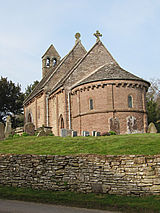 |

|
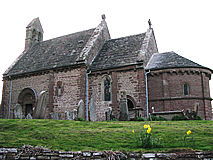 |
|
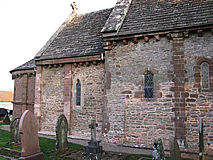 |
|
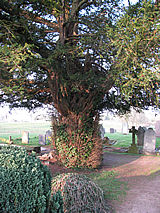 |
Templar Sanctuary
KILPECK
Church of St.Mary and St. David
Oppression & Resistance
|
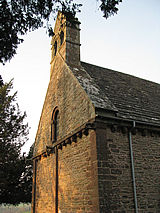 |
 |
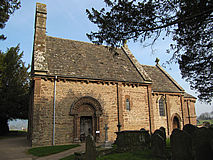
|
 |
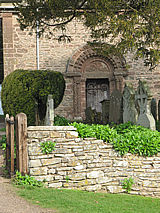 |

|
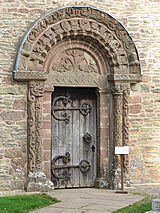 The
famous south doorway |
|
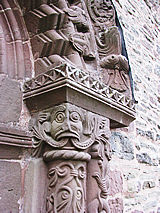
Dragon/Beast Green Man |
|
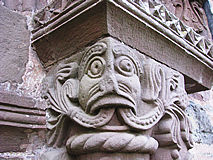 Dragon
and Green Man are two manifestations of the ancient Vegetation Gods |
Apart from some bishops no any Christian symbol can be
found in Kilpeck church. It must have been the scene of fierce controversies between the
new faith and traditional religious convictions |
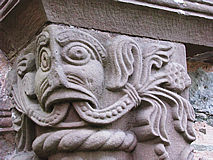 The
foliage bearing a granate apple fruit, symbol of fertility and affluence |
|
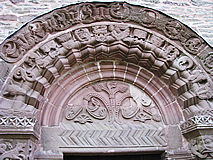
The tympanum
|
|
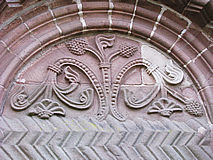 Foliage and fruits as Tree of Life, the
ancient symbol of the Cosmic Mother |
Pagan images like the Green Man serve various purposes.
First of all it proves that these symbols were still very powerful. The church could not
prevent the people from carving them. Secondly, the Church used them for its own purposes
The former tried to convince people that the presence of Pagan Gods only showed their
subservience to the Christian belief |
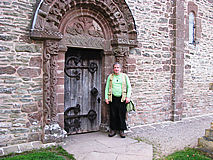 Yes,
I was there |
|
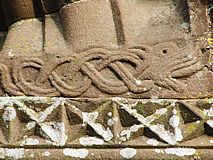
Two springers, creatures of the Maternal Sea |
|
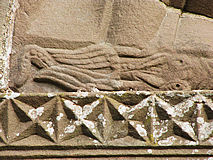 |
Again, it is very unique that Christian symbols are
almost entirely absent in Kilpeck's church. It could even mean that the kind of
Christianity practised was thoroughly heterodox. The kind of images used seem to prove
this. Links with pre-Christian Near Eastern religions support this hypothesis |
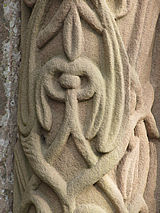 Man
(woman) as part of nature |
|
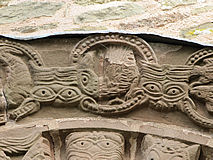
Two masks in between the medallions. What do they
represent? |
|
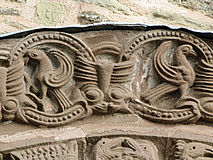 One
mask and two phoenixes.... |
The apex of the arch to the south doorway. Until now
most authors limit themselves to descriptions only, while some try to interpret them
according to Christian tradition. Nobody tries to understand these carvings out of their
original e.g. pre-Christian context.... |
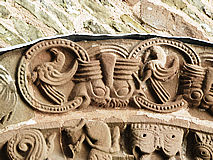 .....representing
the Lady and Her Beasts, as they can be found in the Middle East (Canaan, Ugarit) |
| They also - typically - focus on familiar images, rather
than looking at the unfamiliar. So, these masks in between are much more intreguing than
the dragons and phoenixes.... |
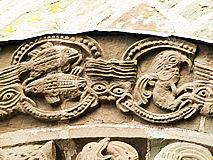
|
|
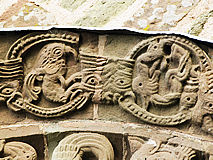 |
It is even more amazing. The masks, representing the
Cosmic Mother, can be found both westward from the Middle East and Eastward, e.g. in China
(via Anatolia) and on Java (via Persia and India). The meaning remained the same. On LINK Java the Mother and Her Sons (Daughters) is
called Kala and Makara |
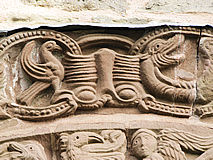 |
|
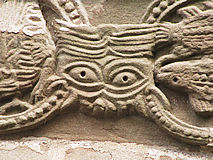
|
It is almost certain that these symbols have been brought
to Europe by the Templars. It is an expression of their heretical faith and has nothing to
do with orthohodox Christianity. In order to repair the damage pagan images were later
"re-interpreted" in the book "The Bestiairy". |
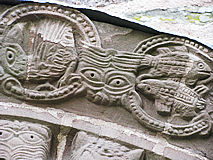 |
My title for the Kilpeck Church "Oppression &
Resistence" reflects the intense struggle that must have taken place. The Church
clearly has tried to condemn in the fiercest ways the original inspiration. Especially
mysogynist terror must have been prominent (see next page with the famous
"Sheela"). Still amazing that this church has survived! |
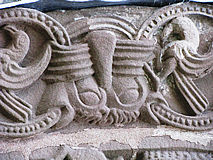 |
|
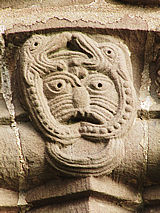
Lady (mask in the centre) and Her Beasts (Dragons left
and right) |
|
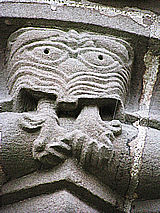 |
|
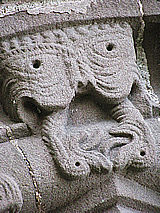 Ditto |
|
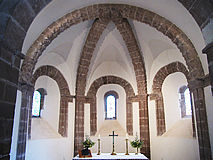
The apse of Kilpeck Church, source of great mystery... |
|
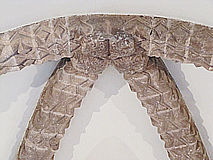 |
|
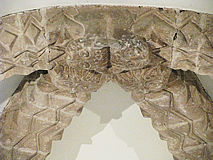 |
|
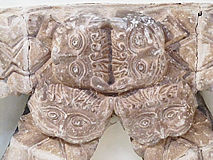
|
|
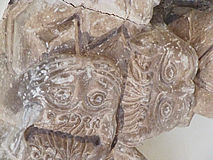 |
|
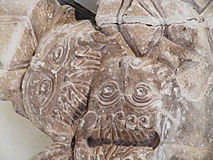 |
|
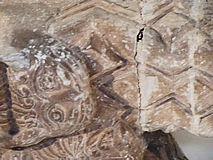
|
|
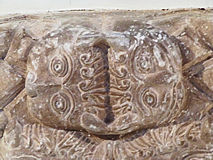 |
Cat-like faces with foliage can be found at several
crucial places in Europe. One of the most famous is LINK
Eunate Chapel in Navarra, Spain. It is a proven fact that these images of Green Men/Beasts
were brought by Templars from the Middle East. They symbolize the Son/Lovers of the Cosmic
Mother |
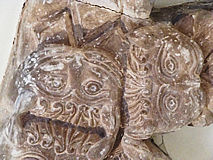 |
|
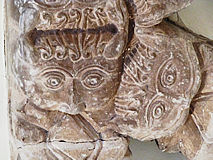
|
|
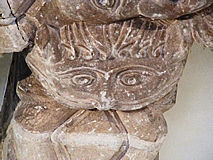 |
Green Men are the guardians of the Mother. Thus it
wouldn't be a surprise - admittedly it is speculation - that the original Deity of Kilpeck
Church was a Goddess e.g. a Black Madonna. A main reason for the clergy's virulent hatred
of femininty... |
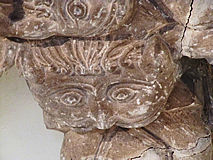 |
| The name: "Church of St.Mary and St.David" might
confirm my thesis. King David was the father of Solomon, the latter being the builder of
the Jewish Temple. The Holiest of Holiest was called "Womb of Astarte". David,
the father, however, wasn't a woman-friendly king. By creating a shortcut between Mary and
David, the clergy might have tried to demonstrate its dominance! |
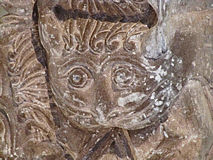
|
|
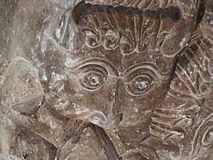 |
|
|